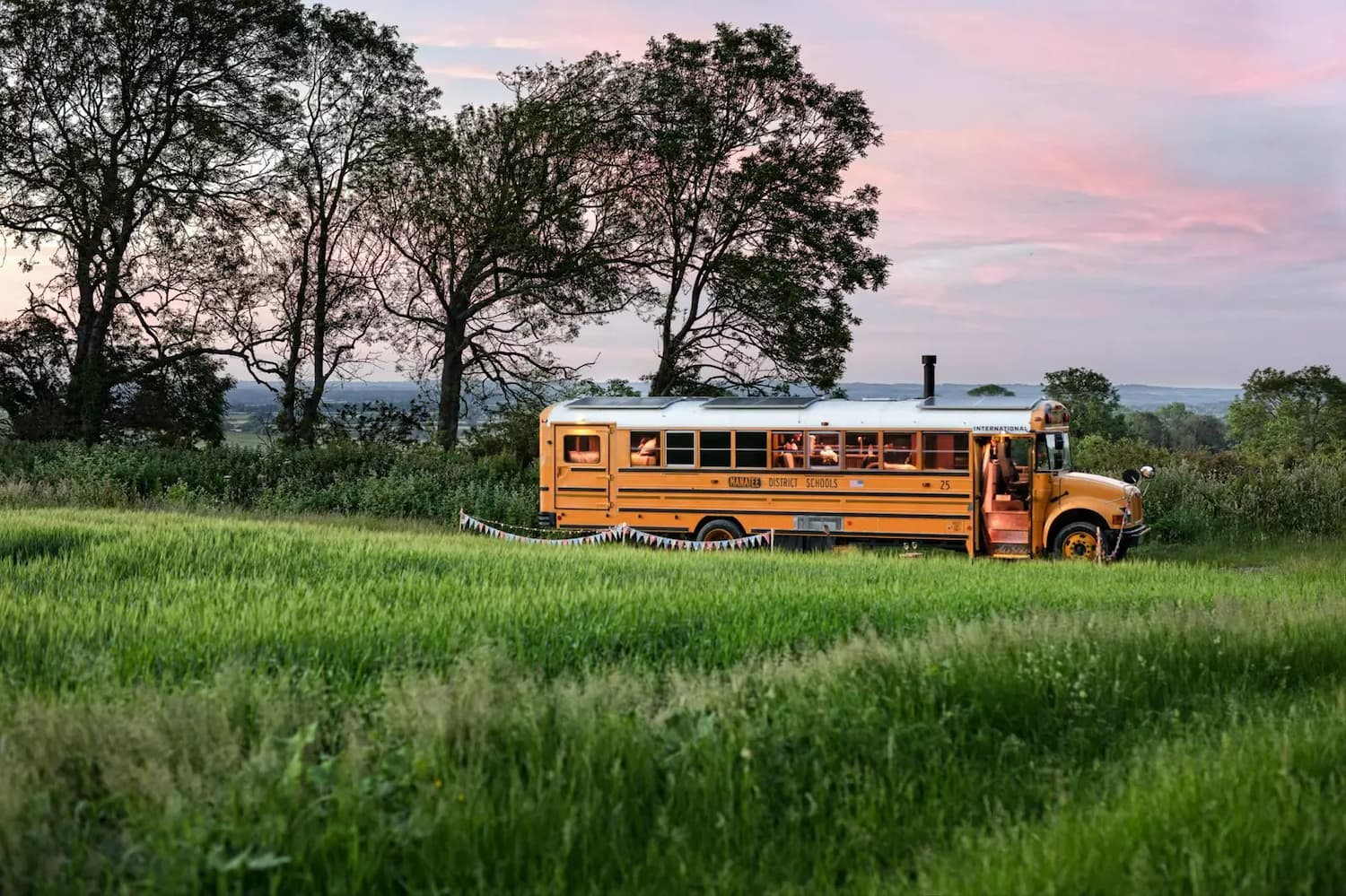
21 Jul Skoolie Stays On How To Convert A School Bus For UK Glamping
Hidden between the green hills of the Sussex countryside stands a proud American school bus. If you’re wondering how it got there, let Ruth and Guy explain. They’ll tell you how to convert a school bus for glamping and, more importantly, why they did it.
Schoolie Stays is a unique glamping experience in the glorious Sussex countryside. Parked between Beachy Head and the South Downs, this yellow school bus has been converted into a luxuriously cosy glamping stay that fits four and is completely off-grid. The impressive DIY-project is impressive to behold – but the story of how Ruth and Guy got to convert an old Floridian schoolie is more impressive still.
A family on a year of US adventures
“In 2019 we decided we wanted to shake up our suburban lives. Already keen campervanners, we took a gamble and bought ourselves an American school bus in Utah and found a builder to convert it for us. Six months later, we packed up the house, took our two kids out of school and flew out to the unknown.”
The Wimpory family had an amazing year of adventures, starting with Guy’s first drive in a 14-tonne vehicle. After a drive around the car park, a few YouTube tutorials, and a generous tip from their bus converter – ”rely on your mirror to see where you are!” – the four were on their way.
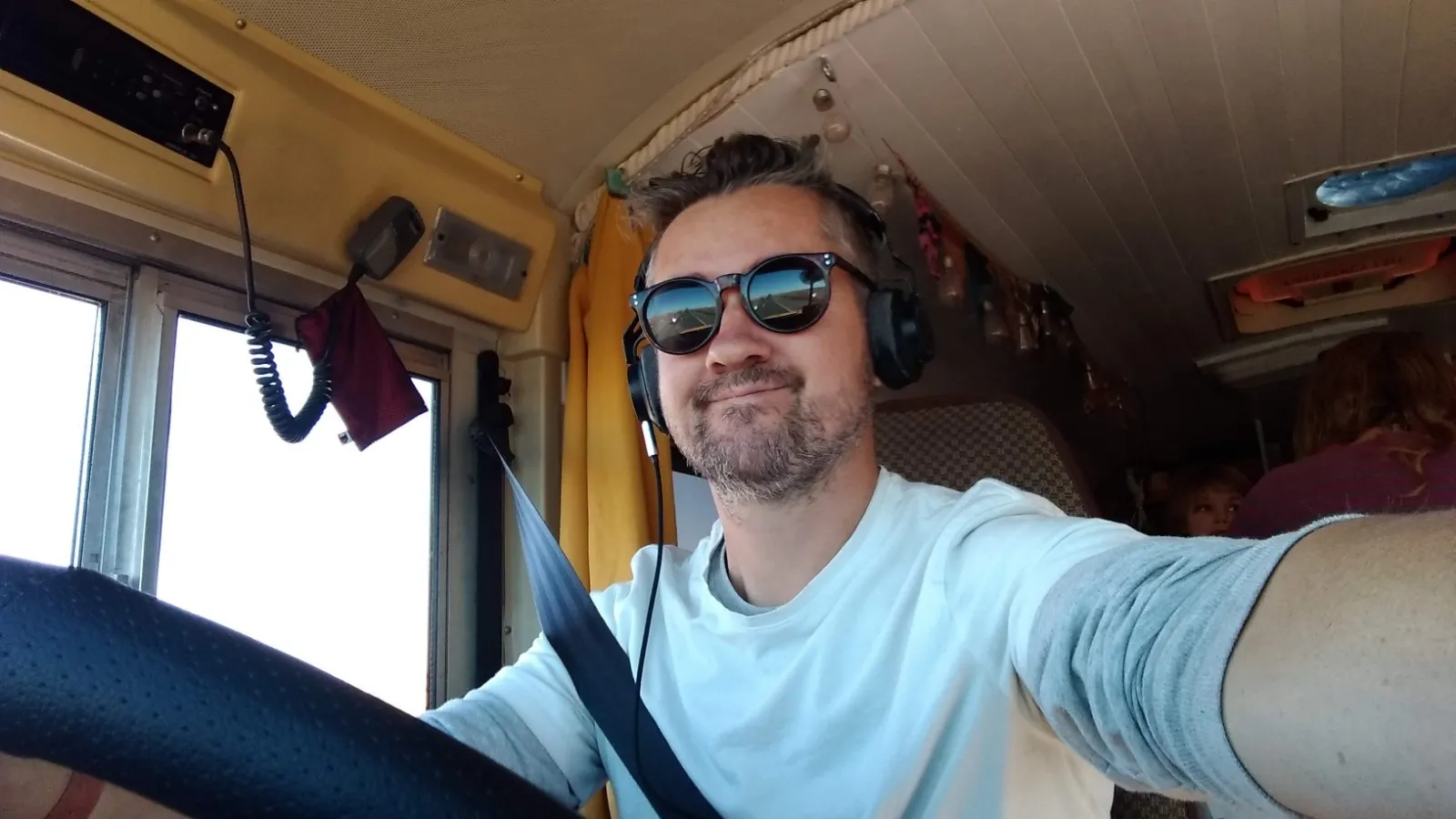
In the year and twenty states that followed, the family visited national parks, met local communities, and experienced societal turbulence – pandemic lockdowns and the BLM debate moving the nation. (Read more about their travels here). Through all their travels the school bus was their home. It was life in the skoolie that tied the journey together and made it so special. “The bus became a symbol for living differently and, as our time in America drew to a close in July 2020, we knew we didn’t want that to end. We would have to bring a skoolie home with us to Sussex.” says Ruth.
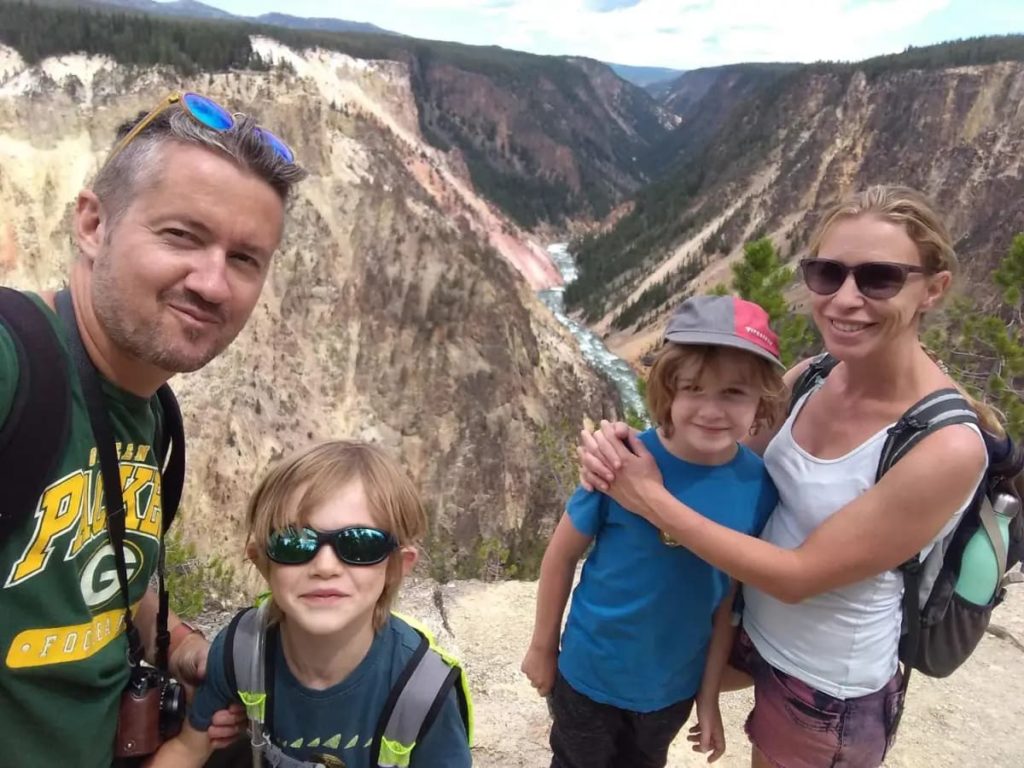
Bringing the dream home
With the idea of building a skoolie in Sussex planted firmly in the Wimporys’ heads, Ruth and Guy turned to their first and obvious question – where to get a US school bus in the UK? The market for American schoolies is extremely slim, so they’d have to import one from the States. But buying an American school bus and bringing it to the UK is not for the faint of heart.
“It takes a lot of time, skills, creativity and contacts to turn an old retired yellow bus from a different continent into a rural bolt hole in the UK. Luckily, after travelling 14,000 miles across America in our first Skoolie, we had the confidence, ability and network to take the plunge and buy bus number 2 and launch our new business: Skoolie Stays.”
Much of the time, skills, and contacts come from the time the family spent with a skoolie community during lockdown. There they put quarantine hours to good use, helping other people convert school buses and learning a wealth of information about bus builds in the process. “We spent hours reflecting on what we would have done differently if we’d built our own bus – what we would do now to make it clever, luxurious, comfortable, inspiring… we had so many ideas.”
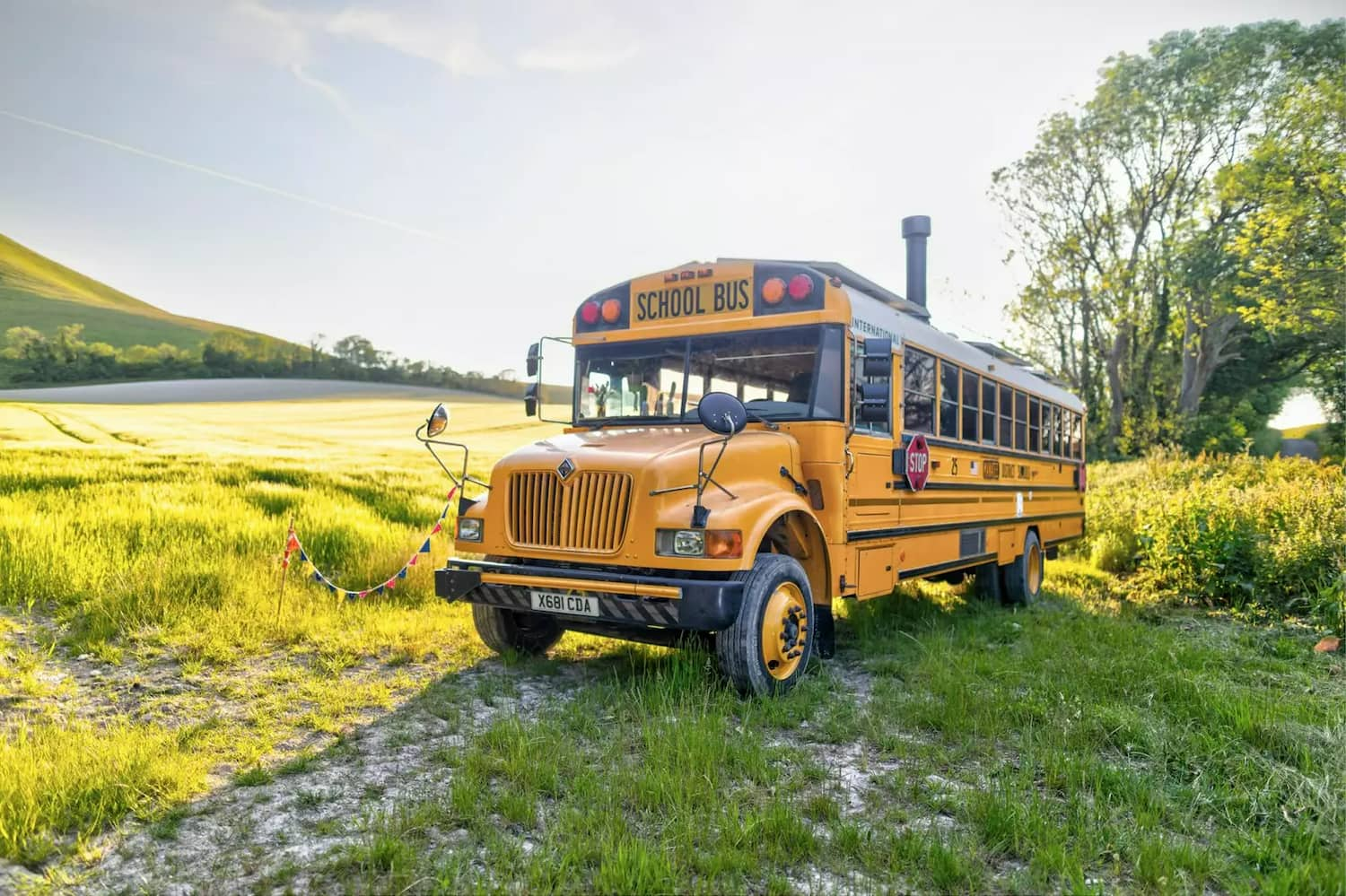
The skills and network gave them a head getting their UK project off the ground. Within two weeks of arriving home, they’d already sold their first bus and bought a new one. Buying their second school bus felt oddly like déjà vu, except there was an added element of financial risk. Buying a school bus in the States isn’t too expensive – old buses are plentiful in the States, so they come at a bargain – but it’s shipping and conversion that cost.
“We needed to be sure we picked a good bus that would be worth the investment we were ready to make. When we found a bus in Florida that had our choice of engine, transmission and had the ‘dog-nose’ look we like (rather than flat-faced), as well as the interior height we sought, we had our friends check it out before we put it on the ship over to Southampton.”
How to convert a school bus the green way
With an original Floridian school bus parked in the South Downs, the conversion project could begin. From the start, Ruth and Guy knew they wanted to use materials they had on hand. Reusing old parts, upcycling objects they found along the way, and hunting for pieces in second-hand stores.
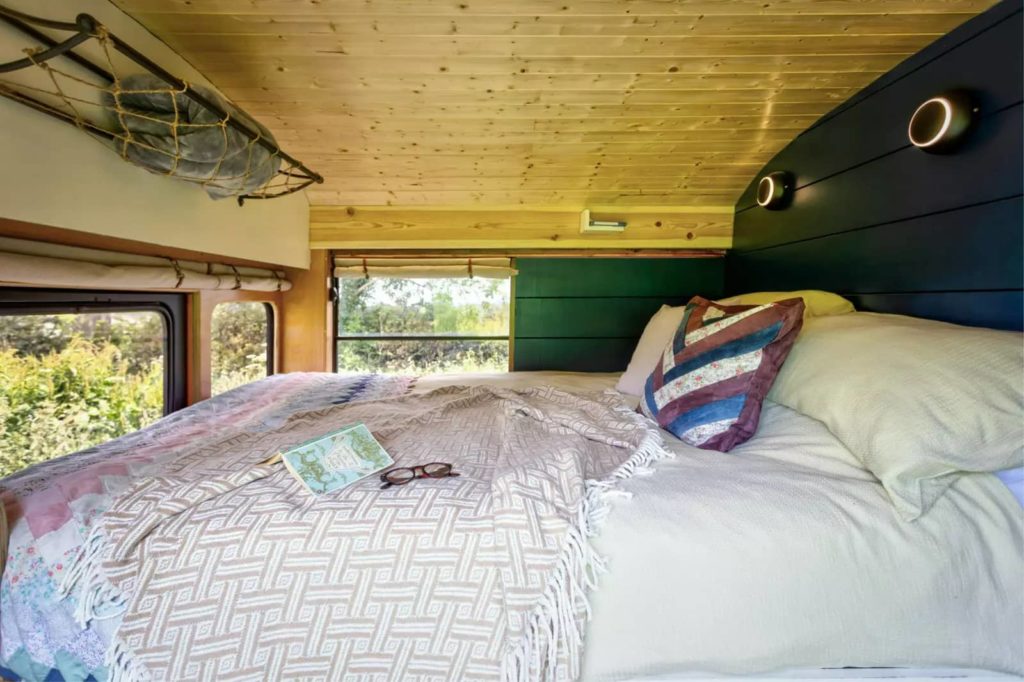
Ruth shares that “Gumtree, Facebook Marketplace and Ebay were my friends. Scouring through other people’s trash produced bus treasure which came with fascinating stories. Our retro leather pouf came from a lady who was thrilled to find out that her beloved footstool (which didn’t fit her house) was going to move to a Skoolie. She was so inspired by our story that she went on to become one of our first bookings.”
Objects and materials picked up for the conversion often served a different purpose than first intended. “The old doors we picked up were too heavy for us to use. They were made from American oak slats that we planed down and framed our old bus mirror as part of a feature wall, and a kitchen cabinet.”
Ruth and Guy also wanted the bus to be off-grid. “We loved that we could just travel anywhere in the U.S, we didn’t need to plug in to survive and could stay in the wilds as long as our water tank allowed us, so our UK bus needed the same features.”
Together with some friends, the couple installed six solar panels with gas struts so that they could be angled at an optimal angle towards the sun – essential for harvesting the low English winter sun. Another eco solution is the compost toilet they installed. “We thought long and hard about this one. There was no doubt in our minds that a compost toilet made sense – it not only massively reduces water consumption, which means we wouldn’t require a black waste tank, we lived with one for a year and we know that they are brilliant devices for small spaces.”
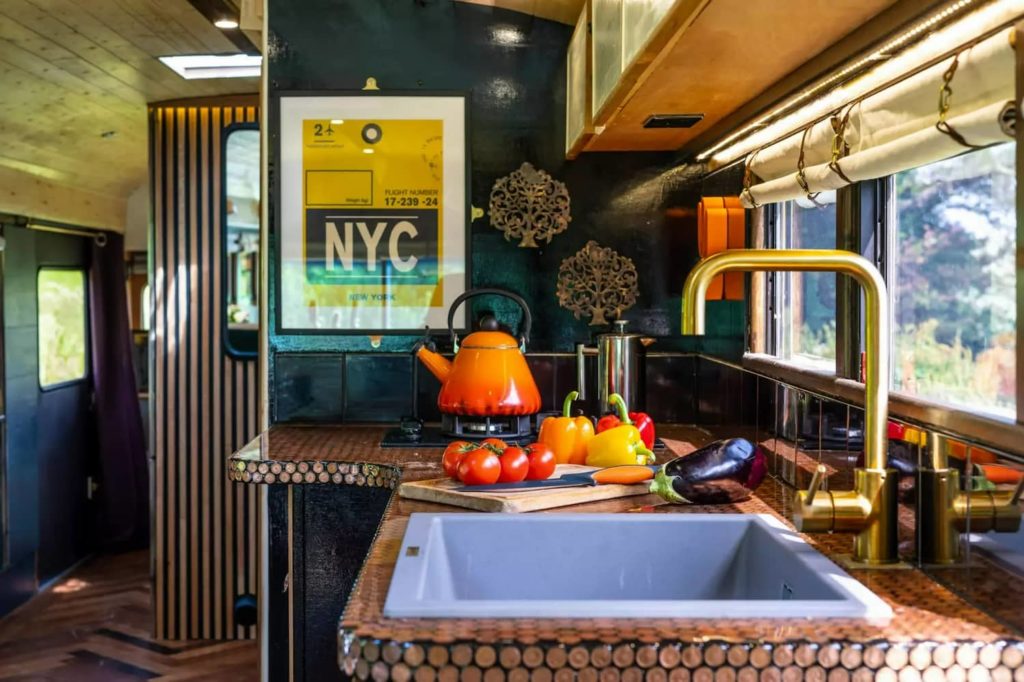
The finishing touches that the family added to the schoolie were, first, the paint job. Developing their original idea of green to match the wood and copper found throughout the schoolie, they added copper and cream paints. The furniture, too, has earthy and soft colours – grey, maroon, and teal with the occasional hint of orange. A true DIY’er, Ruth then spent the evenings sewing cushion covers that would tie everything together while the boys worked on their last big project – the Murphy bunk beds.
The result? A uniquely quirky schoolie that oozes craftsmanship and comfort. The Wimporys couldn’t be happier: “We are both so proud of what we have achieved – what a journey, what a finish and what a result: we own our very own fantastic skoolie again.”
We highly recommend you try Skoolie Stays yourself. If you’re not heading to the Sussex countryside soon, search for other unique stays on campanyon.com.

